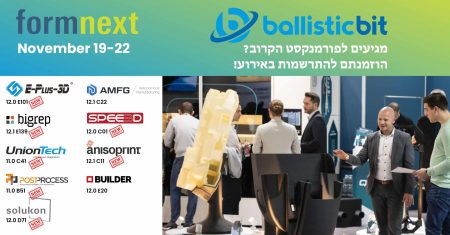Whether you’re producing prototypes, end-use parts, or complex models, choosing the right 3D printing material can make all the difference.
3D printing materials are a central component of the additive manufacturing process, directly impacting the quality, properties, and applications of printed products. Choosing the right material depends on product requirements, material properties, and the type of printer. In this article, we’ll review the most common materials, their characteristics, and their areas of application.
1. PLA (Polylactic Acid)
PLA is one of the most popular 3D printing materials, especially among
beginners. It is derived from renewable resources like corn starch and sugarcane, making it eco-friendly and biodegradable. PLA is easy to print with, requires a low printing temperature, and doesn’t need a heated bed. However, it is less resistant to heat and mechanical stress, making it best suited for prototypes, models, and non-durable parts.
2. ABS (Acrylonitrile Butadiene Styrene)
ABS is a strong and durable plastic used for 3D printing, suitable for applications requiring mechanical and thermal resistance. It is common in industries such as automotive and electronics. ABS requires a high printing temperature and a heated bed and emits an odor during printing, so proper ventilation is recommended.
3. PETG (Polyethylene Terephthalate Glycol-modified)
PETG combines the benefits of PLA and ABS. It is easy to print, has good mechanical strength, and is heat resistant. The material is semi-transparent and has a glossy finish, making it suitable for various applications, including functional parts and containers.
4. TPU (Thermoplastic Polyurethane)
TPU is a flexible and durable material, suitable for applications requiring elasticity, such as covers, gaskets, and straps. It requires special print settings and a printer capable of handling flexible materials.
5. Nylon (Polyamide)
Nylon is a strong, durable, and flexible material, ideal for industrial applications. It absorbs moisture, so it must be stored in dry conditions. It is suitable for functional parts, bearings, and gears.
6. Resins
Used in SLA or DLP 3D printing technologies, resins are liquid materials that harden under UV light. They offer high resolution and smooth surface finishes, making them suitable for applications such as jewelry, dental, and highly detailed models. However, they require careful handling due to their potential toxicity.
7. PEEK – “The King of Engineering Plastics”
Best suited for extreme environments (aerospace, oil and gas, medical implants), PEEK has extremely high thermal and chemical resistance. It is biocompatible and sterilizable (used in spinal implants and surgical tools) and offers excellent mechanical strength, sometimes replacing metal in certain applications.
Typical 3D Printing Applications for PEEK:
8. ULTEM (PEI) – “The High-Temperature Alternative”
Easier to print than PEEK (though it still requires a heated chamber), ULTEM offers good flame resistance (self-extinguishing, UL94 V-0 rating), is strong and rigid (though not as strong as PEEK), and is more cost-effective (~$200–$400/kg).
Typical 3D Printing Applications for ULTEM:
Choosing the right 3D printing material is critical to project success and achieving the desired results. Understanding material properties, alignin them with product requirements, and ensuring printer compatibility are essential steps. As technology advances, the range of materials continues to grow, enabling new and innovative applications across various industries.
Ballistic Bit offers a wide range of 3D printing materials and an expert team to help you achieve optimal results for every project.
WhatsApp us
טכנולוגיית הדפסת תלת מימד מחוללת מהפכה בתעשיות מרובות בכך שהיא אפשרה השגת מטרות מהירה, התאמה אישית וייצור חסכוני.
לסיכום: הרבגוניות והיעילות של הדפסת תלת מימד הופכות אותה לנכס בעל ערך על פני מגזרים מגוונים, מה שמניע חדשנות ומשפר את יכולות הייצור.

Thanks for signing up